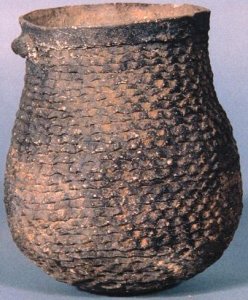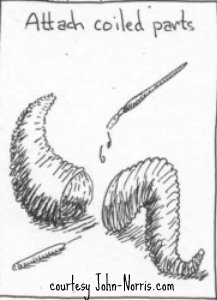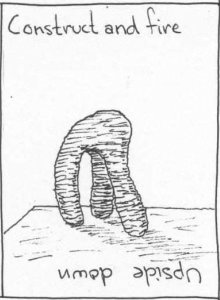|
Coil Pottery
One very popular ceramic form known as Coil Pottery has its roots from the Greeks several millenia ago. The coil method in Grecian art came sometime after the pottery wheel method began around 2500 BC. After initial construction, these early Greek coiled pots were often placed on a wheel, turned and trimmed giving them a smoothed finish. Due to the quantity of Ancient Greek pottery that has remained intact over time, archeologists have been able to better understand and piece together ancient Greek society. Paintings and documentation have not preserved as well as pottery. 
Nearly 2000 years ago, agriculture began in North America. This new method of food production allowed the previously nomadic Indians to settle down in one area. By about 500 A.D., early Puebloan life had begun to focus on agriculture although people still hunted and gathered wild foods. This is when coil pottery first appeared in the Southwest United States. Various functional pottery forms began to take shape to assist with storing grains and liquids, and preserving seeds for the next planting. Initially, handmade vessels were for functional purposes, with little consideration for artistry. Most of the very early vessels were undecorated, leaving only the texture of the coils and pinches, or indentations from pointed sticks. Symmetry was not much of a concern. Check out History of Pottery for more information on the beginnings of pottery. Greater Dimensions With larger ceramic forms, the artist and admirer has a wonderful opportunity to discover the textures of the pottery surface. Naturally in the coil pottery process, pinches and other marks are left on the surface, however the addition of stamping, carving, and burnishing can be used to bring additional emotions and provide interesting perspectives to the piece. 3-Dimensional Projections 


To Make Coil Pottery
|
Appreciate when you ...
What's New on BH?
Blog: Old Fourth Ward - Atlanta, GA
Feature: Potter - Julie Jones




